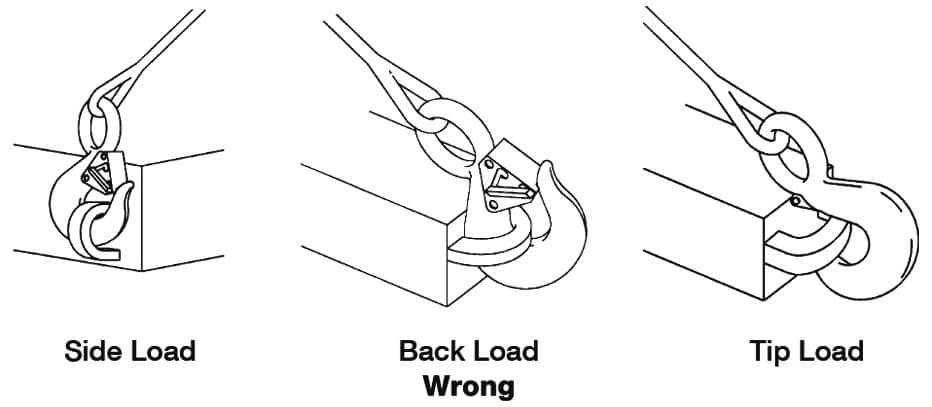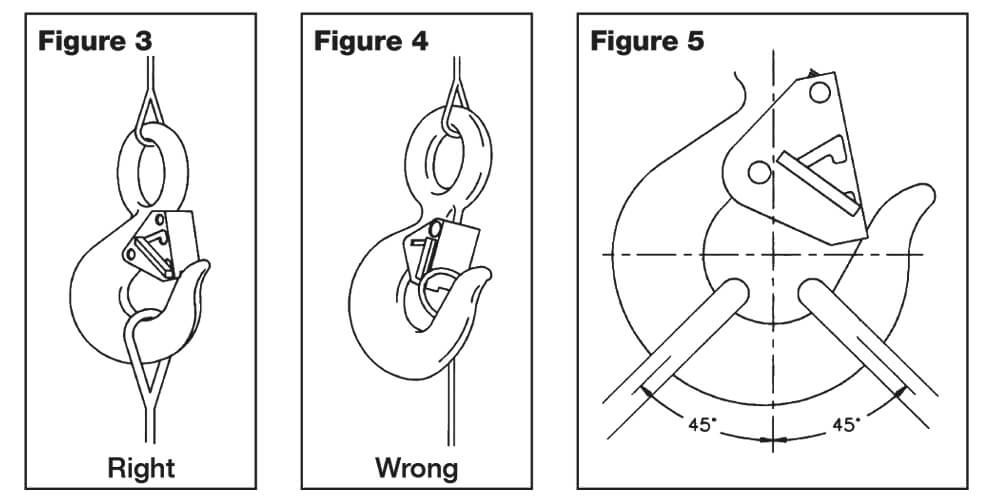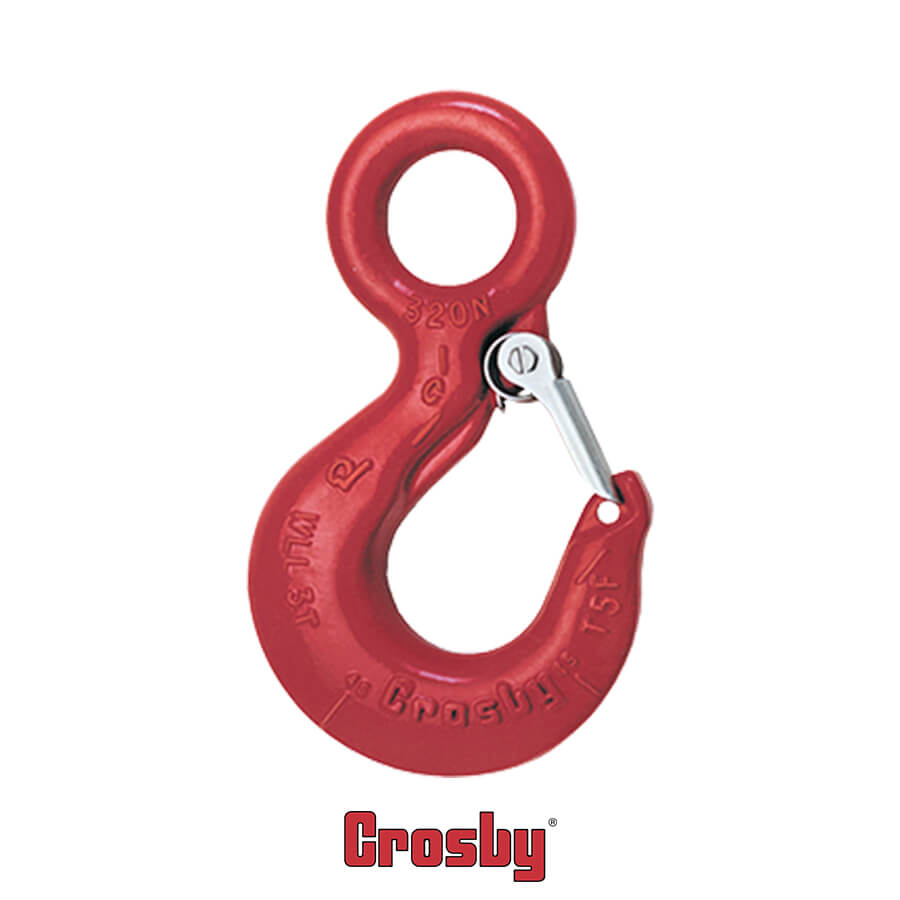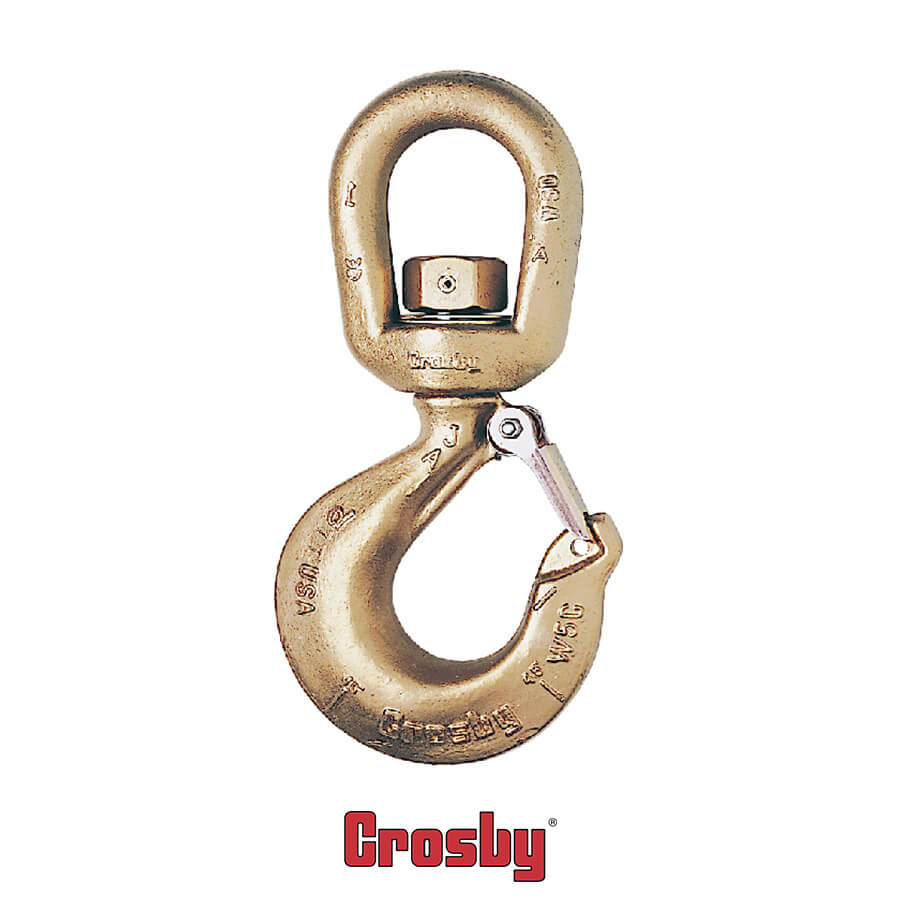Hoist Hook Resources
Hoist Hooks
Warnings & Application Instructions
Important Safety Information —
Read and Follow
- A visual periodic inspection for cracks, nicks, wear, gouges and deformation as part of a comprehensive documented inspection program, should be conducted by trained personnel in compliance with the schedule in ANSI B30. 10.
- For hooks used in frequent load cycles or pulsating loads, the hook and threads should be periodically inspected by Magnetic Particle or Dye Penetrant.
(Note: Some disassembly may be required.) - Never use a hook whose throat opening has been increased, or whose tip has been bent more than 10 degrees out of plane from the hook body, or is in any other way distorted or bent. Note: A latch will not work properly on a hook with a bent or worn tip.
- Never use a hook that is worn beyond the limits shown in Figure 1.
- Remove from service any hook with a crack, nick, or gouge. Hooks with a crack, nick, or gouge shall be repaired by grinding lengthwise, following the contour of the hook, provided that the reduced dimension is within the limits shown in Figure 1.
- Never repair, alter, rework, or reshape a hook by welding, heating, burning, or bending.
- Never side load, back load, or tip load a hook.
(See Figure 2.) - Eye hooks, shank hooks and swivel hooks are designed to be used with wire rope or chain.
Efficiency of assembly may be reduced when used with synthetic material. - Do not swivel the S-322 swivel hook while it is supporting a load.
- The use of a latch may be mandatory by regulations or safety codes; e.g., OSHA, MSHA, ANSI/ASME B30, Insurance, etc. (Note: When using latches, see instructions in “Understanding: The Crosby Group
Warnings” for further information.) - Always make sure the hook supports the load. (See Figure 3). The latch must never support the load
(See Figure 4). - When placing two (2) sling legs in hook, make sure the angle from the vertical to the outermost leg is not greater than 45 degrees, and the included angle between the legs does not exceed 90 degrees*
(See Figure 5). - See ANSI/ASME B30.10 “Hooks” for additional information.
* For angles greater than 90 degrees, or more than (2) legs, a master link or bolt type anchor shackle should be used to attach the legs of the sling to the hook.
Figure 1

Zone A: Repair Not Required
Zone B: 10% of Original Dimension
Zone C: 5% of Original Dimension
Zone D: See Minimum Thread Size Chart
Figure 2


WARNING:
- Loads may disengage from hook if proper procedures are not followed.
- A falling load may cause serious injury or death.
- See OSHA Rule 1926.550(g) for personnel hoisting by cranes or derricks. A Crosby 319, 320, or 322 hook with a PL Latch attached (when secured with bolt, nut and pin) may be used for lifting personnel. A Crosby S-320N Hook with a S-4320 Latch attached (when secured with cotter pin or bolt, nut and pin) may be used for lifting personnel.
- Threads may corrode and/or strip and drop the load.
- Hook must always support the load. The load must never be supported
by the latch. - Never apply more force than the hook’s assigned Working Load Limit
(WLL) rating. - Read and understand these instructions before using hook.



